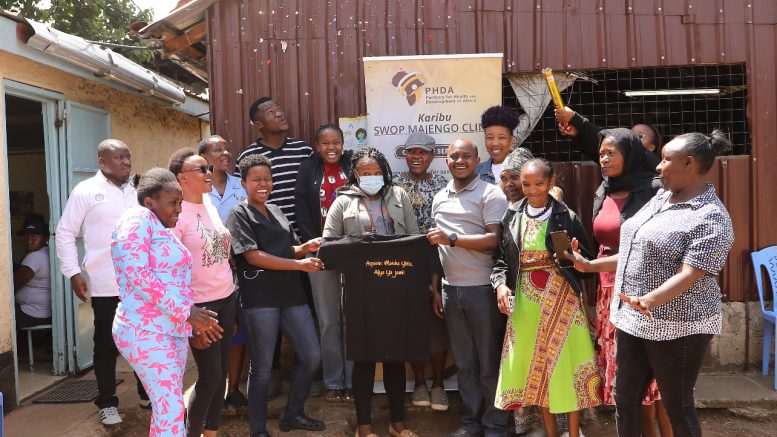In 2023, the province of Manitoba saw more new cases of human immunodeficiency virus (HIV) than it did at any point during the HIV epidemic of the 1980s, one of the greatest public health challenges in history. After a sharp increase in HIV rates in recent years, Manitoba now has the second-highest rate of HIV diagnosis in the country.
“We’re having more new infections in Manitoba than ever before,” said Keith Fowke, professor in the Max Rady college of medicine. “It used to be a gay man’s disease, but now in Manitoba, there’s more Indigenous women that are newly infected with HIV than any others.”
Fowke explained that the rise in HIV cases stems from a combination of factors affecting highly vulnerable populations. These include individuals experiencing homelessness, the intersecting epidemics of HIV and methamphetamine use and the prevalence of other sexually transmitted infections such as syphilis, chlamydia and gonorrhea. Together, these challenges have contributed to an increase in HIV infections that disproportionately impact Indigenous women.
Through collaborations with communities in Nairobi, Kenya where HIV rates surpass those in Manitoba, Fowke and his team are able to study large numbers of people exposed to or living with HIV. Their findings can then be applied to not only Manitoba, but the whole world.
Fowke’s research focuses largely on why some individuals exposed to HIV do not become infected or experience milder symptoms than others.
“An analogy is you may have a situation in your family or in your household where someone always becomes sick with the cold that comes around, and there’s someone else who is working and living in the same environment, and they never seem to get sick,” Fowke said. “The same is true for almost all infectious diseases we have.
“People vary in their susceptibility to getting the infection, and then once infected, they vary in how sick they get.”
Fowke’s research team discovered that some women, despite being heavily exposed to HIV, remain uninfected. The longer these women have been engaged in sex work, the more likely they are to stay protected against HIV, suggesting sex work may have altered certain aspects of their immune systems, playing a role in their resistance to infection. This phenomenon has been a focal point of their research for many years.
Fowke found that in the genital tract where the HIV virus enters, the immune systems of some women are calm and resting rather than highly activated. Compared to a calm immune cell, a highly active immune cell is 1,000 times more susceptible to HIV and produces 1,000 times more virus.
If HIV enters the genital tract of a woman with many calm immune cells and very few activated ones, the virus will struggle to infect suitable target cells, leading to the low rates of HIV, Fowke observed.
“They had an immune system that was still functional, but it was calm, cool, quiet, and therefore didn’t have a lot of the highly activated cells that HIV likes to infect,” Fowke said. “That was a major finding for us in the field, the development of this immune quiescence hypothesis, that you could resist HIV infection by having a quiet immune system at the general tract with few HIV target cells.”
More recently, Fowke and his team have been working to duplicate that quiet immune system in women who lacked it and remained at risk of getting HIV. To do this, the highly activated immune cells HIV favours need to be stopped from migrating into the genital tract.
This process of immune cells migrating into tissues, is called inflammation. Inflammation happens when immune cells rush to an area of the body to fight infection. If a woman has bacterial vaginosis, for example, immune cells (including highly active ones) enter the genital tract to fight the infection. In these situations, HIV is easily transmitted.
Fowke’s goal was to use an anti-inflammatory drug to block the process of inflammation, thereby keeping highly active immune cells out of the genital tract and stopping the HIV virus in its tracks.
“We talked to the community members and said, ‘what are some of the anti-inflammatory drugs that you would like to use?’” Fowke explained. “They said ‘we want to use something that is known in the community, that’s safe, it’s affordable, it’s available and it doesn’t have any stigma, that it’s accessible to our community.’ And so, the one that they selected was aspirin.”
In a study giving Kenyan women low-dose aspirin for six weeks, Fowke’s team saw a 35 per cent reduction in the number of HIV target cells in women’s genital tracts. The long-term goal of his research is to prevent HIV infection using anti-inflammatory drugs like aspirin, in addition to condoms, fewer sexual partners and antiretroviral therapies that stop the HIV virus from replicating.
“HIV infection is still an issue,” Fowke said. “There’s good treatment, but we’re not doing enough to prevent new infections, including at home.”


